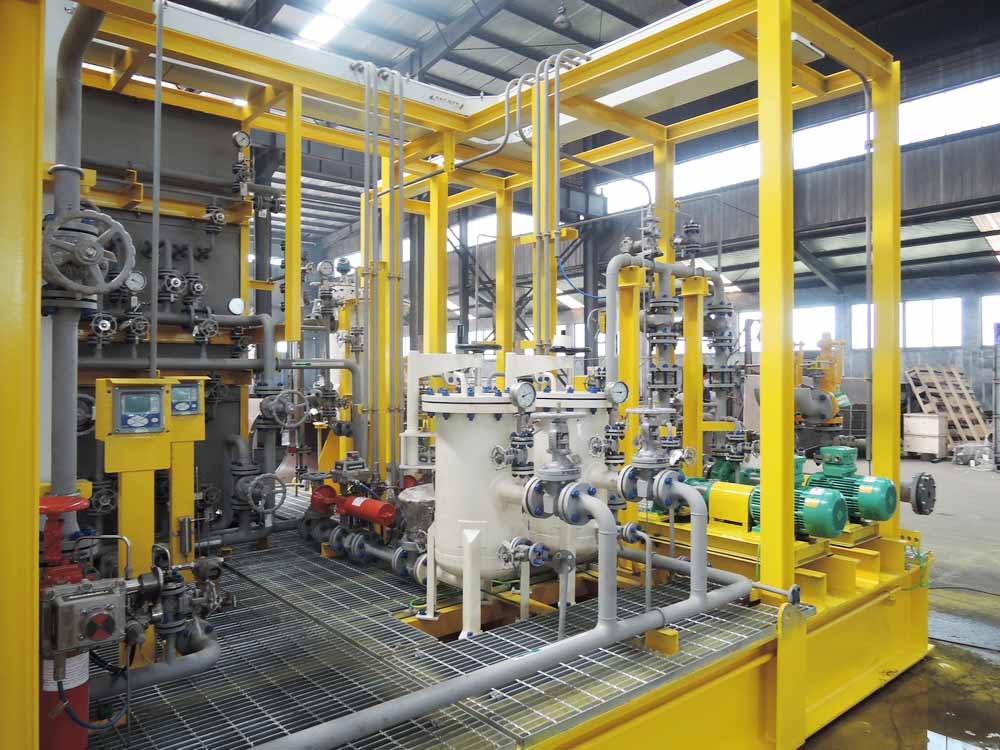Electrodeionization (EDI) System
 The EDI process combines two well-established water purification technologies-electrodialysis (ED) and ion-exchange resin deionization. Through this process dissolved salts can be removed with low energy cost and without the need for chemical regeneration. The EDI process normally replaces conventional mixed-bed resin deionizers. The EDI process removes ions from water by forcing them out of the feed stream into an adjacent stream via an electric potential. EDI is different from ED. By using resins in the diluting chambers, the resins allow for more efficient migration of ions in very low conductivity water. The resins operate in a continuous state by acting not as an ion-storage medium but as an ion conduit. Ideally feed water to EDI is RO permeate having a conductivity ranging from 4-30 microsiemens/cm (preferably 4-10). The following feed parameters are also to be adhered to:
The EDI process combines two well-established water purification technologies-electrodialysis (ED) and ion-exchange resin deionization. Through this process dissolved salts can be removed with low energy cost and without the need for chemical regeneration. The EDI process normally replaces conventional mixed-bed resin deionizers. The EDI process removes ions from water by forcing them out of the feed stream into an adjacent stream via an electric potential. EDI is different from ED. By using resins in the diluting chambers, the resins allow for more efficient migration of ions in very low conductivity water. The resins operate in a continuous state by acting not as an ion-storage medium but as an ion conduit. Ideally feed water to EDI is RO permeate having a conductivity ranging from 4-30 microsiemens/cm (preferably 4-10). The following feed parameters are also to be adhered to:
- pH: 5.0 to 9.5 (preferably pH 7.0-8.0).
- Temperature: 5 0 C to 35 0 C. Optimum quality at 25 0 C
- Inlet pressure: 4 bar (60 psi) - maximum
- Outlet Pressure: Concentrate and electrolyte outlet pressures to be lower than the product outlet pressure
- Hardness (as CaCO3): Maximum 1.0 ppm. Recommended 0.1 ppm
- Organics: Maximum 0.5 ppm TOC. Recommended not detectable
- Oxidizers: Maximum 0.05 ppm (Cl 2 ). Recommended not detectable Maximum 0.02 ppm (O 3 ). Recommended not detectable
- Metals: Maximum 0.01 ppm Fe, Mn, transition metals
- Total CO2 : Recommended less than 5 ppm

